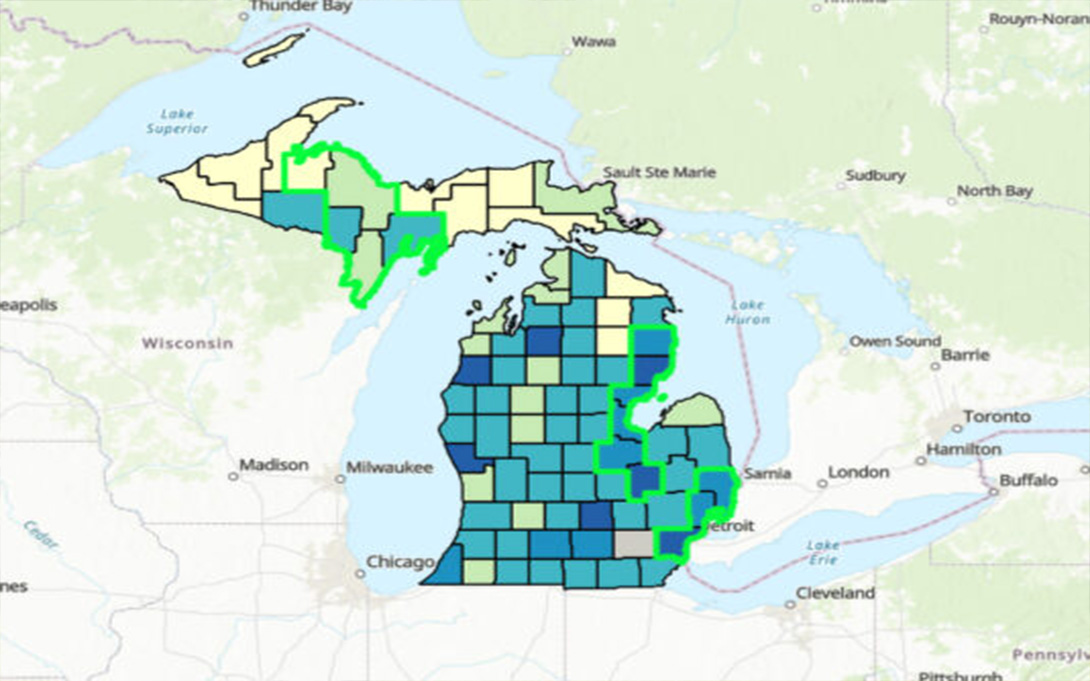
A new landscape map and analysis created by the University of Michigan show demographic information with a connection to opioid use disorder, examining data such as unemployment rates, annual income, opioid-related hospitalizations, and physical and mental health and well-being.
To create the map, U-M's Poverty Solutions and Opioid Prescribing Engagement Network (OPEN) used available data from sources such as the Centers for Disease Control and Prevention, Michigan Department of Health and Human Services, and Substance Abuse and Mental Health Services Administration, among others.
"Substance abuse is a complex medical issue with ties to mental health, lack of social infrastructure and limited economic mobility. Analyzing multiple indicators related to opioid use, access to medical care and poverty provides new insights into the causes and consequences of Michigan's opioid epidemic," said H. Luke Shaefer, faculty director of Poverty Solutions and the Hermann and Amalie Kohn Professor of Social Justice and Social Policy at the Ford School of Public Policy.
Along with documenting different demographics, the new landscape map also highlights three county clusters that have been especially affected by the opioid epidemic. The Bay County cluster includes Genesee, Saginaw, Bay, Arenac, Iosco and Alcona counties. The Marquette County region includes Marquette, Baraga, Dickinson, Delta and Menominee counties. The Wayne-Macomb-St.Clair County cluster includes Wayne, Macomb and St. Clair counties.
"This tool will allow us, and other organizations, to focus our programs, education and resources on the counties that need them most. This new landscape map is a helpful next step in reducing the impact of the opioid crisis," said Chad Brummett, co-director of both OPEN and the U-M Opioid Research Institute.
Through researching and analyzing the data sets collected, the three county clusters were found to be some of the highest-ranked areas in the state for opioid-related connections.
Counties in the Bay County cluster rank among the highest in the state for opioid-related hospitalizations, opioid-related emergency department visits and opioid prescribing. Counties in the Wayne-Macomb-St. Clair County cluster rank among the highest in the state for opioid-related hospitalizations and opioid-related emergency department visits. Counties in the Marquette County cluster rank among the highest in the state for opioid prescribing. Together, these clusters hold four of the top five counties in the state in terms of rates of admission for opioid treatment.
The teams at both Poverty Solutions and OPEN hope that organizations will be able to look at this data and discover ways to engage further with their communities and reduce the impact of the opioid epidemic.
"There are many great organizations throughout the state making positive contributions to the fight against opioid use disorder. As the opioid crisis continues to evolve and the number of fatal opioid overdoses continues to rise, it's our hope that maps and reports like these can provide new insights into the problem at hand and supplement the work that is already being done," said John Bulat, data and policy analyst with Poverty Solutions.
Written by Cole Dzubak, Opioid Prescribing Engagement Network (OPEN)
